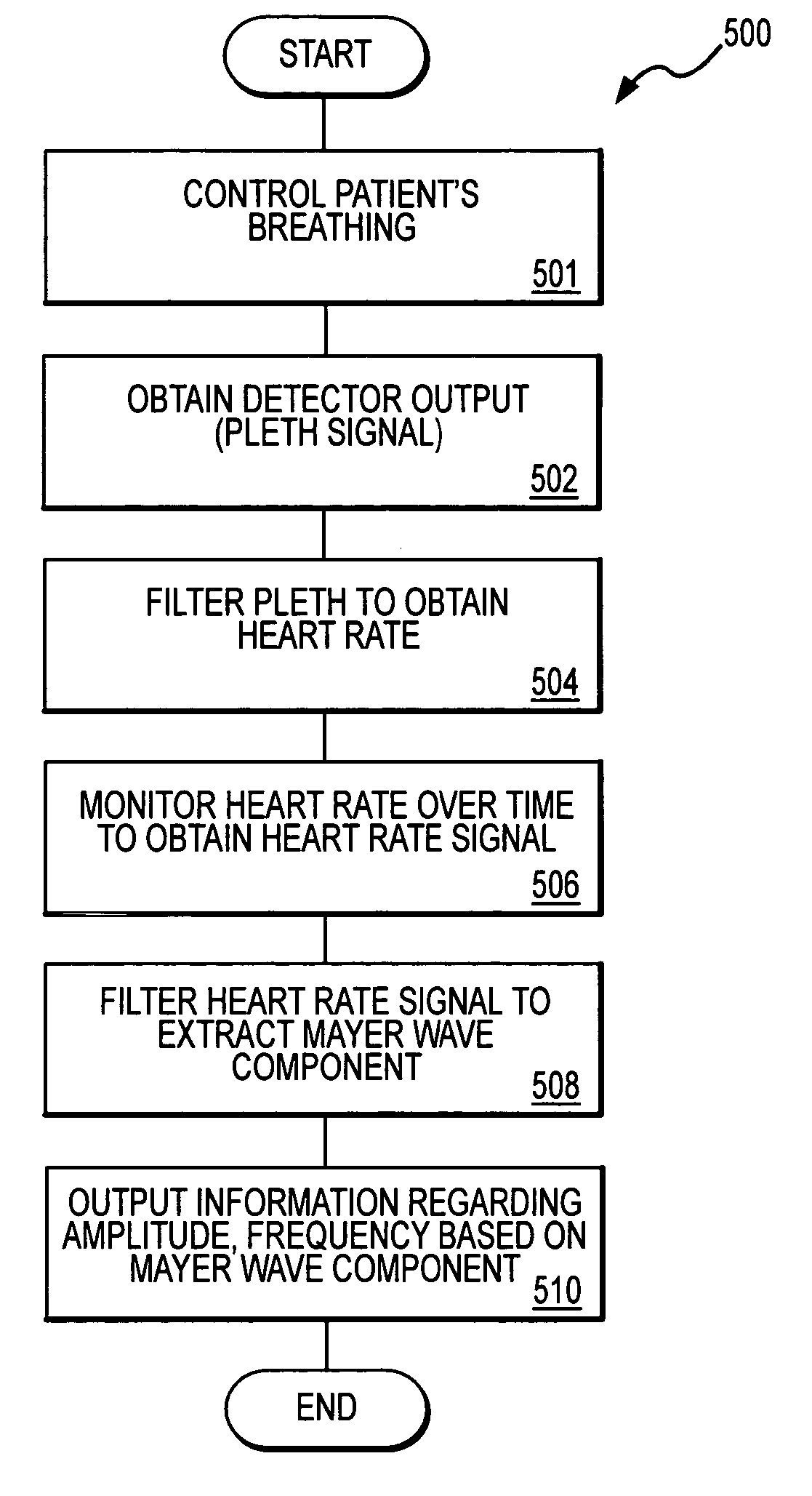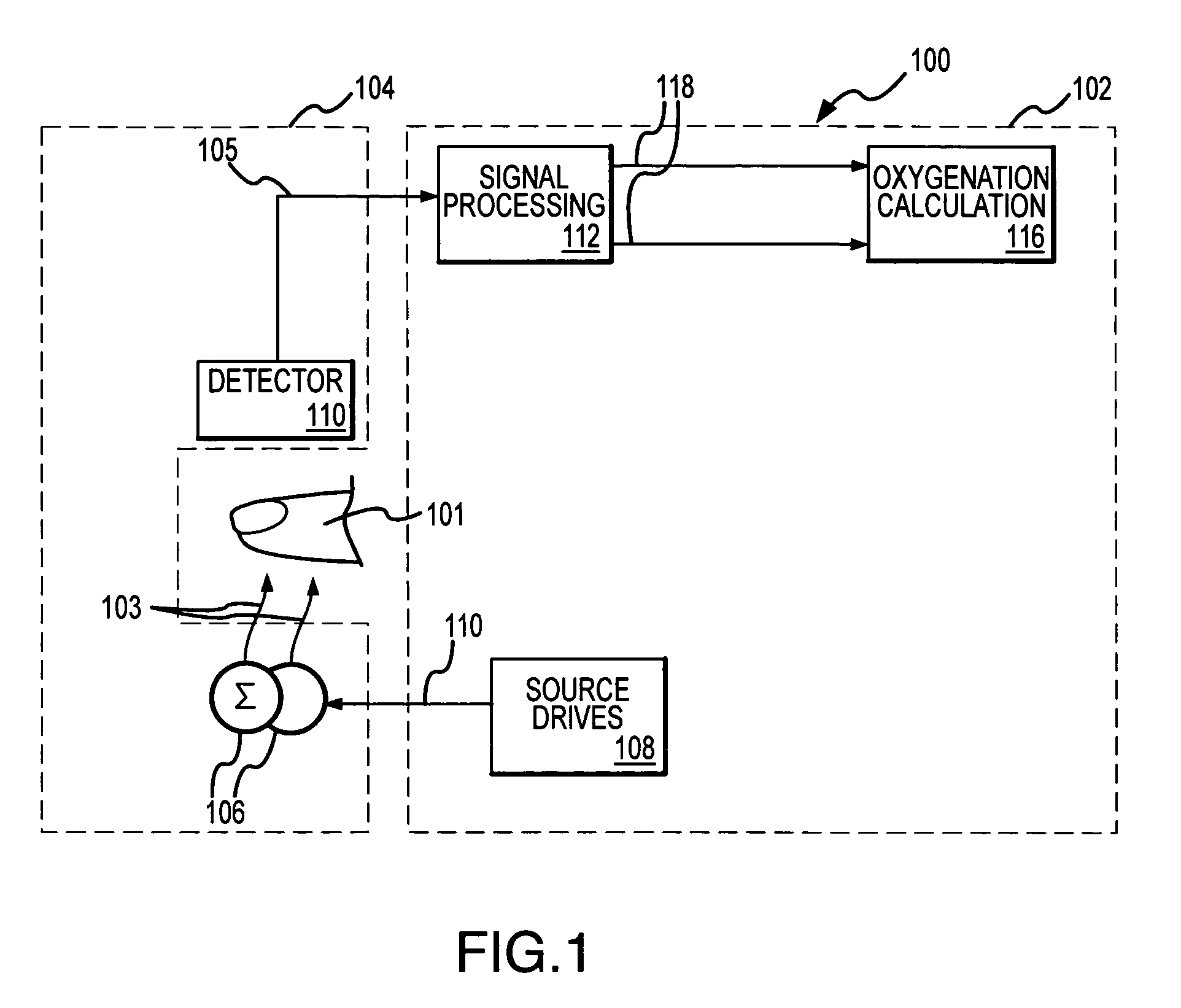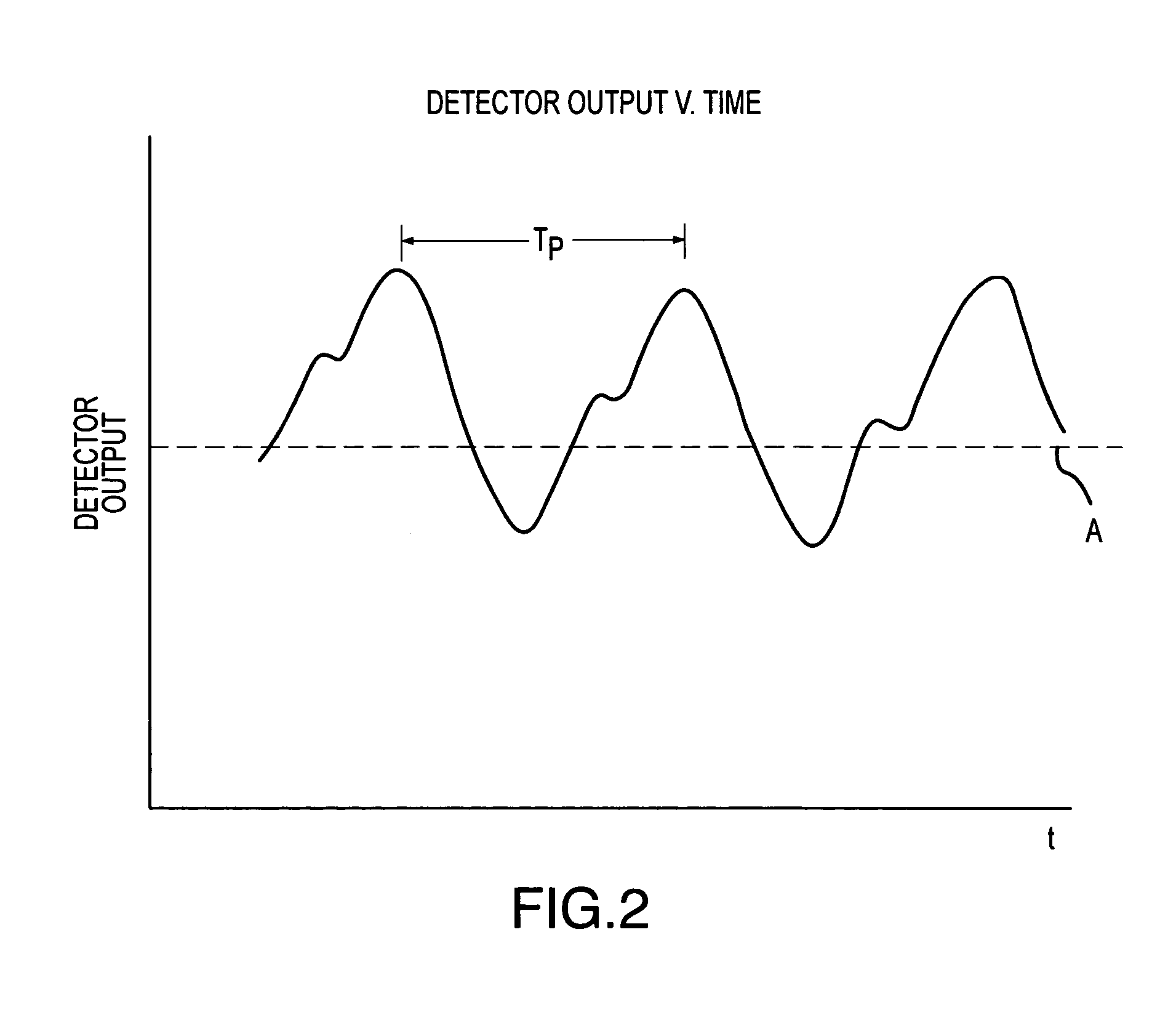Monitoring physiological parameters based on variations in a photoplethysmographic signal
a technology of photoplethysmography and physiological parameters, applied in the field of noninvasive monitoring of physiological parameters, to achieve the effects of convenient monitoring, low frequency heart rate variability information, and fast, robust and computationally efficien
- Summary
- Abstract
- Description
- Claims
- Application Information
AI Technical Summary
Benefits of technology
Problems solved by technology
Method used
Image
Examples
Embodiment Construction
[0056]The present invention relates to obtaining physiological parameter information for a patient based on an analysis of a pleth signal involving identifying an effect associated with a Mayer Wave component of the pleth signal. In the following discussion, the invention is described in the context of an implementation utilizing components of a conventional pulse oximeter. The invention has particular advantages in this regard as such an implementation enhances the functionality of conventional pulse oximeters and provides important physiological parameter information in a cost effective manner. However, it will be appreciated that various aspects of the invention are not limited to such a pulse oximeter or other multi-channel signal implementations and the invention may be embodied in a dedicated single or multi-channel photoplethysmography instrument. Accordingly, the following discussion should be understood as exemplifying the invention and not by way of limitation.
[0057]In acc...
PUM
 Login to View More
Login to View More Abstract
Description
Claims
Application Information
 Login to View More
Login to View More - R&D
- Intellectual Property
- Life Sciences
- Materials
- Tech Scout
- Unparalleled Data Quality
- Higher Quality Content
- 60% Fewer Hallucinations
Browse by: Latest US Patents, China's latest patents, Technical Efficacy Thesaurus, Application Domain, Technology Topic, Popular Technical Reports.
© 2025 PatSnap. All rights reserved.Legal|Privacy policy|Modern Slavery Act Transparency Statement|Sitemap|About US| Contact US: help@patsnap.com



